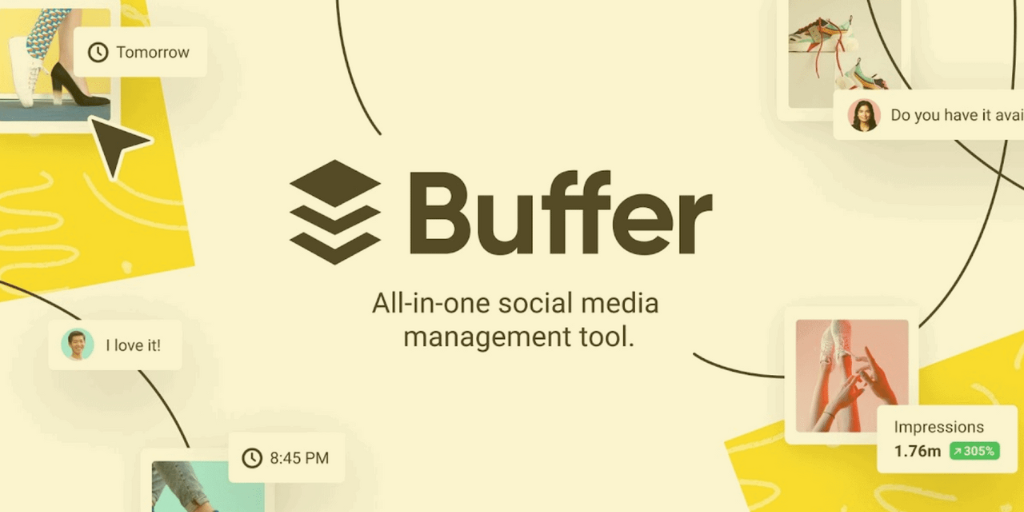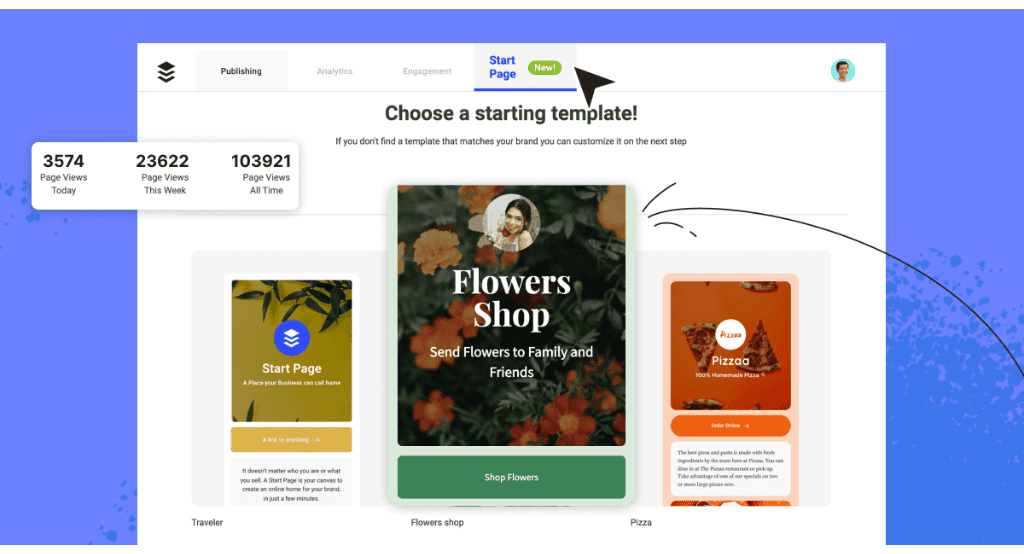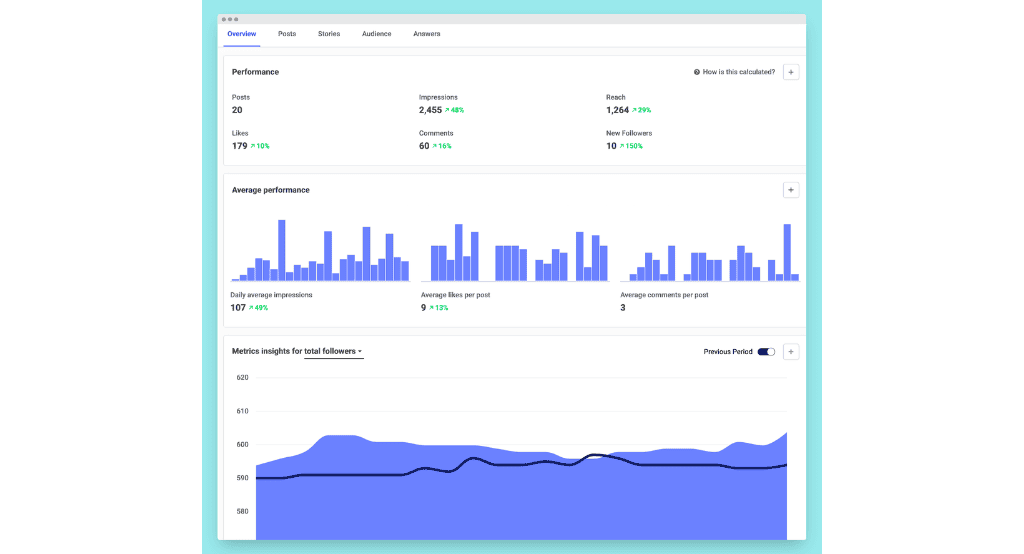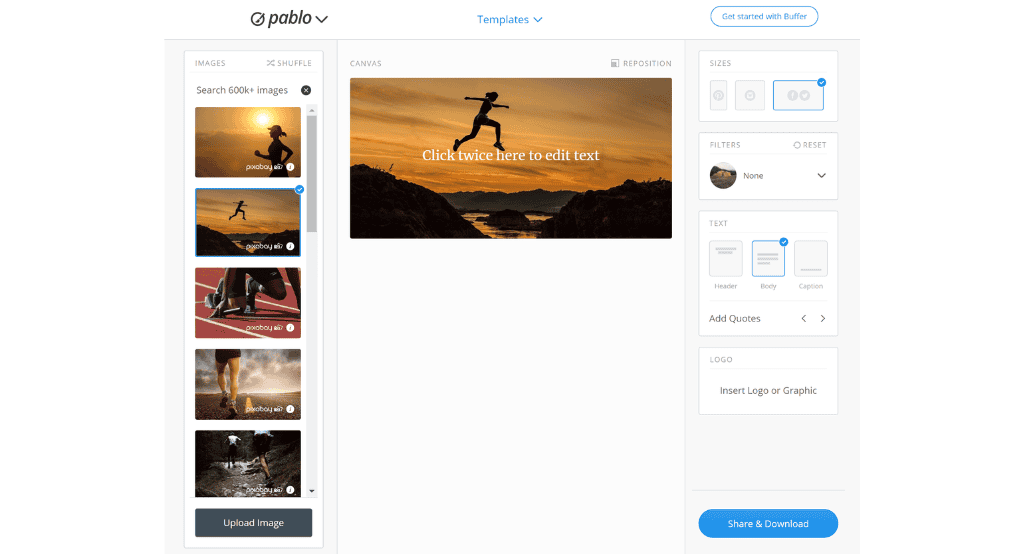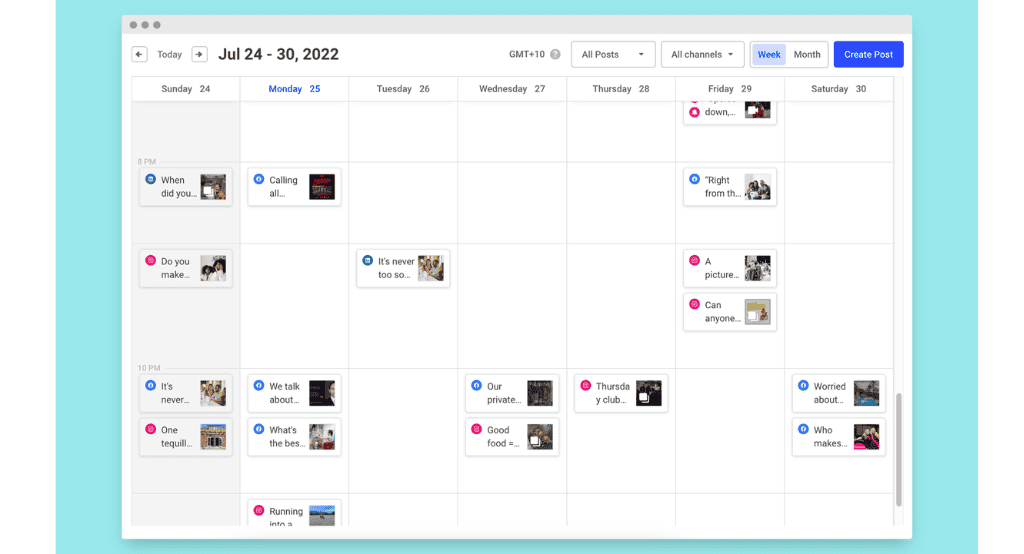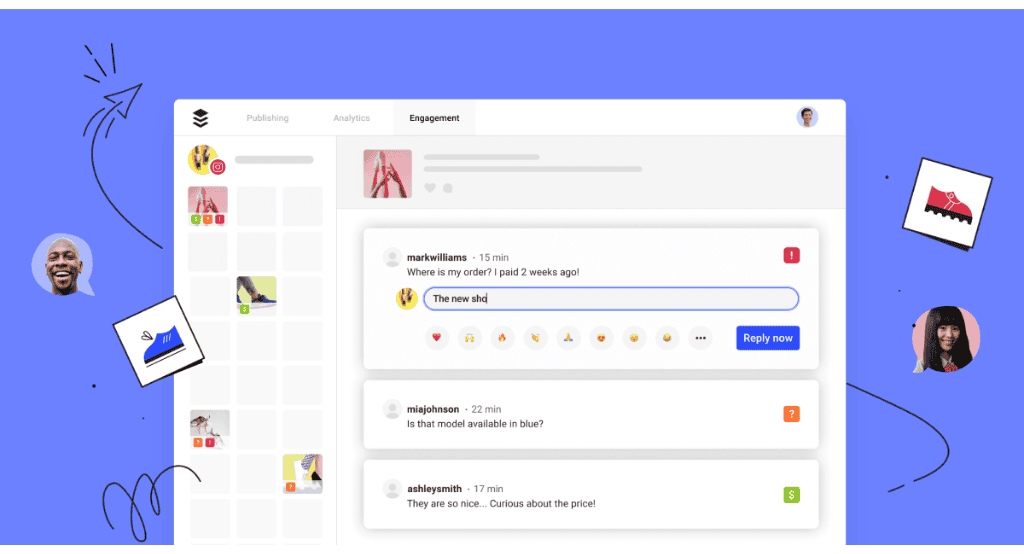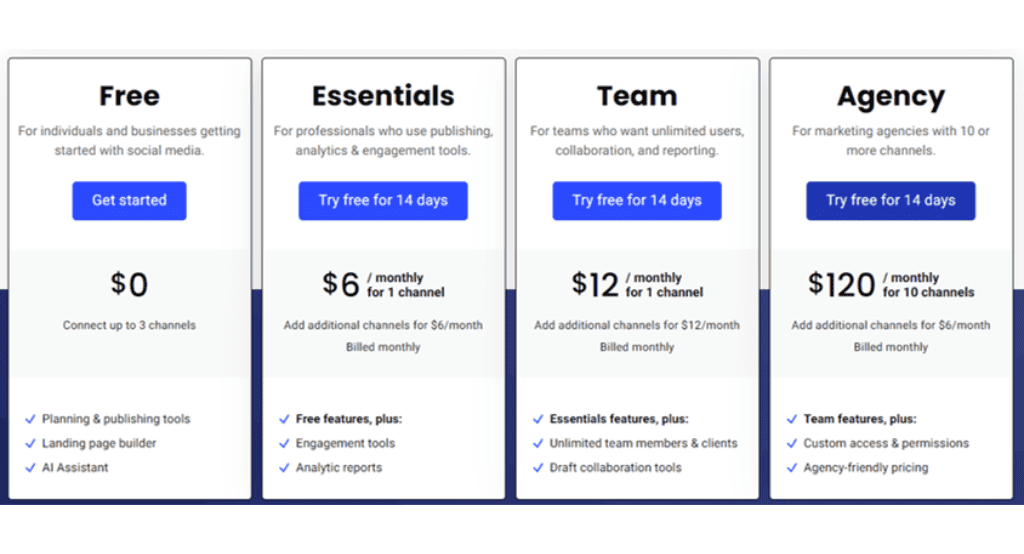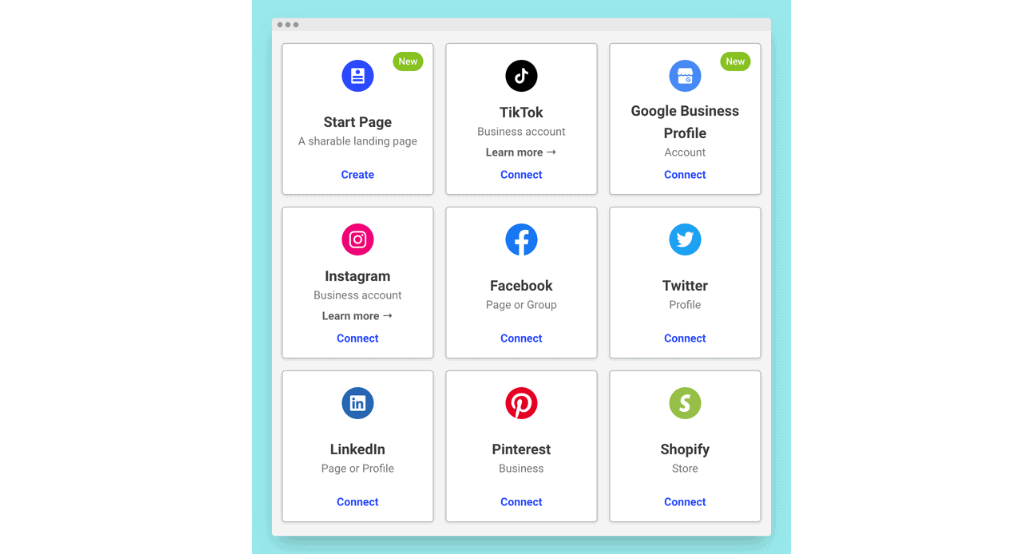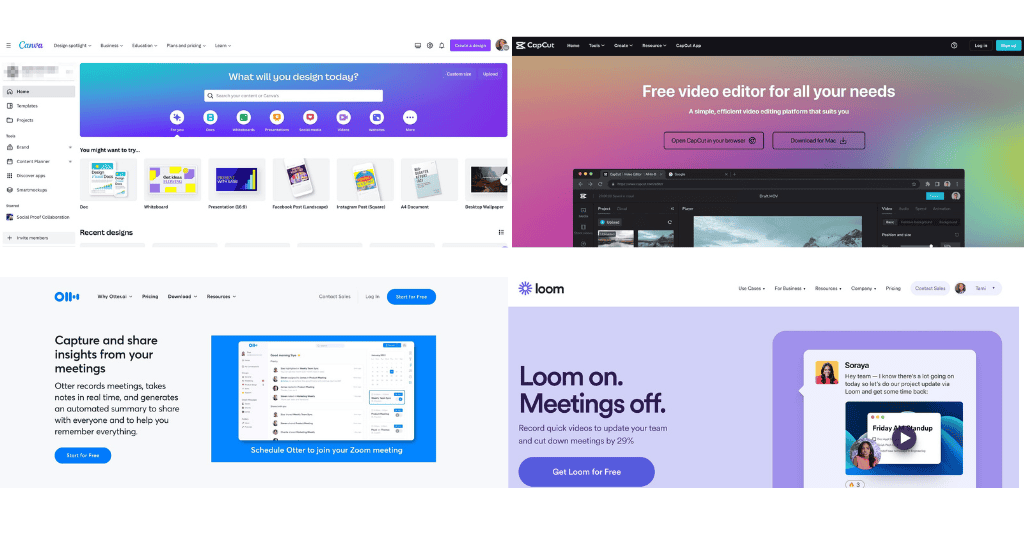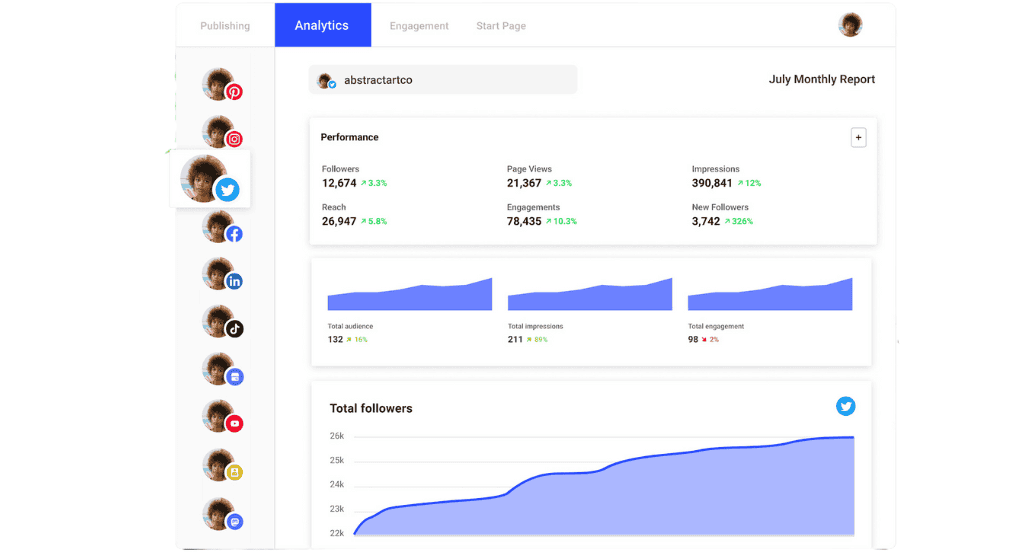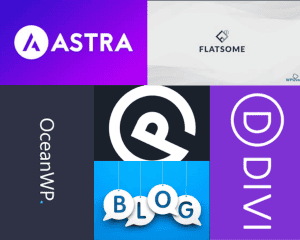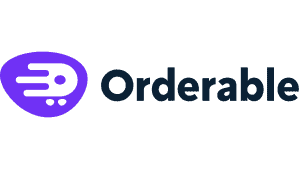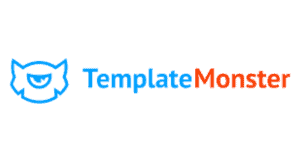Introduction to Buffer
Features of Buffer
Buffer offers a range of features designed to simplify social media management and enhance effectiveness. Here’s a detailed look at some of the key features:
1. Post Scheduling
Buffer allows users to schedule posts across multiple social media platforms at predetermined times. This is particularly useful for maintaining a consistent presence online without having to post in real-time. Users can queue up content for days or weeks in advance, and Buffer will automatically post them according to the scheduled times.
2. Analytics
The platform provides comprehensive analytics that help users track the performance of their posts. Metrics such as engagement rates, clicks, likes, shares, and more are readily available. This data helps users understand what types of content resonate best with their audience, enabling them to tailor their future posts to improve engagement.
3. Team Collaboration
Buffer supports team collaboration, allowing multiple team members to contribute and manage social media campaigns. This feature includes permissions and approval workflows to ensure that all content is vetted before going live.
4. Pablo by Buffer
Pablo is a graphic creation tool integrated within Buffer, designed to help users create engaging images for their posts quickly and easily. It offers various templates and design elements, making it easy to produce visually appealing graphics without needing professional design skills.
5. Browser Extensions and Mobile Apps
Buffer offers browser extensions for Chrome, Firefox, and Safari, as well as mobile apps for iOS and Android. These tools enable users to manage their social media accounts and schedule posts directly from their browser or mobile device, adding to the platform’s convenience.
6. Social Media Calendar
The social media calendar feature provides a visual overview of all scheduled and past posts. This allows users to easily plan out their content strategy and make adjustments as needed.
7. Engagement
Buffer's engagement tools help users stay on top of interactions within their posts. It consolidates comments and messages from different platforms into one place, making it easier to respond promptly and maintain engagement with the audience.
These features make Buffer a versatile tool for anyone looking to efficiently manage their social media presence while staying engaged with their audience.
User Experience
Buffer's design philosophy emphasizes simplicity and efficiency, making it highly accessible for users of all skill levels. Here’s a breakdown of the user experience aspects of Buffer:
1. Intuitive Interface
The Buffer interface is clean and straightforward, avoiding the clutter that can overwhelm users in some other social media management tools. Navigation is intuitive, with clear labels for all main features such as scheduling, analytics, and settings. Even beginners can quickly become proficient in using the platform.
2. Ease of Setup
Setting up a Buffer account is a simple process. Users can easily connect their social media profiles and start scheduling posts within minutes. The initial setup includes a guided tour, which helps new users understand how to make the most of all the features available.
3. Mobile Responsiveness
Buffer’s mobile apps are well-designed, mirroring the simplicity and functionality of the desktop version. This coherence ensures that users can manage their social media campaigns seamlessly across devices, which is crucial for marketers on the go.
4. Customer Support
Buffer provides a comprehensive support system that includes email support, a rich online help center, and active social media channels. Their customer service is known for being attentive and helpful, addressing user concerns and providing useful guidance.
5. Learning Resources
Buffer offers an extensive range of learning materials, including blogs, webinars, and tutorials. These resources are valuable for users looking to deepen their knowledge of social media strategies and make full use of the platform’s capabilities.
Overall, Buffer delivers a user experience that is both pleasant and practical, making it an excellent choice for social media management, particularly for those who value simplicity and effectiveness in their tools.
Pricing and Plans
Buffer offers a variety of pricing plans to cater to different types and sizes of users, from individuals just starting out with social media to large agencies requiring extensive tools and customization. Here's a detailed overview of their current pricing structure:
1. Free Plan
- Cost: $0
- Features: The Free plan is ideal for individuals and businesses just getting started with social media. It allows you to connect up to 3 channels and includes basic planning and publishing tools, a landing page builder, and an AI Assistant.
- Best For: Beginners and small businesses testing the waters of social media management without financial commitment.
2. Essentials Plan
- Cost: $6 per month for 1 channel; additional channels for $6 each per month.
- Features: This plan builds on the Free plan by adding engagement tools and analytic reports, making it suitable for professionals who need more than just basic publishing.
- Best For: Professional marketers and small teams that need deeper insights and more active engagement with their audience.
3. Team Plan
- Cost: $12 per month for 1 channel; additional channels for $12 each per month.
- Features: Includes everything in the Essentials plan, plus features tailored for team collaboration such as unlimited team members and clients, and draft collaboration tools.
- Best For: Larger teams that require collaborative tools for managing social media and extensive reporting features.
4. Agency Plan
- Cost: $120 per month for 10 channels; additional channels for $6 each per month.
- Features: Designed for marketing agencies, this plan includes all features from the Team plan plus custom access and permissions and agency-friendly pricing.
- Best For: Large agencies that manage multiple channels for various clients and need high-level customization and control.
Buffer also offers a discount for choosing annual billing, saving users the cost of two months compared to monthly billing.
This tiered pricing model ensures that there is a suitable plan for every user, from solo social media managers to large agencies. The flexibility to add additional channels as needed allows users to scale their use of Buffer according to their growing needs.
Integrations
Buffer's effectiveness as a social media management tool is significantly enhanced by its ability to integrate with a wide range of other software and platforms. This connectivity allows users to create a more streamlined workflow and leverage additional tools alongside Buffer for a comprehensive approach to social media management. Here's an overview of some of the key integrations available with Buffer:
1. Social Media Platforms
Buffer supports direct integration with major social media networks including Facebook, Twitter, Instagram, LinkedIn, and Pinterest. This broad support enables users to manage multiple platforms from one central location, simplifying the process of cross-posting and maintaining a consistent brand voice across different channels.
2. Content Creation Tools
Integrations with content creation tools like Canva and Pablo by Buffer allow users to design and publish visually appealing graphics directly within their social media posts. This seamless integration helps in maintaining a high-quality and consistent visual identity without needing to switch between multiple tools.
3. Analytics and Reporting Tools
Buffer integrates with Google Analytics and other reporting tools to provide deeper insights into social media performance. This helps users to measure the effectiveness of their campaigns and make data-driven decisions to optimize their strategies.
4. Customer Relationship Management (CRM) Systems
Integrations with CRM systems enable Buffer users to sync customer data and insights, providing a more holistic view of customer engagements across social channels. This is crucial for businesses focused on building long-term customer relationships and personalized marketing efforts.
5. Collaboration Tools
Tools like Slack and Zapier can be integrated with Buffer to enhance team collaboration. For instance, notifications of scheduled posts or approvals can be sent directly to a Slack channel, and workflows can be automated using Zapier, connecting Buffer with hundreds of other applications to automate tasks and save time.
These integrations not only enhance the functionality of Buffer but also ensure that it fits perfectly into a variety of digital marketing ecosystems, making it a versatile choice for businesses of all sizes.
Comparisons with Competitors
Buffer stands out as a popular choice for social media management, but it faces competition from several other notable tools in the market. Here’s how Buffer compares to two of its main competitors, Hootsuite and Sprout Social:
1. Buffer vs. Hootsuite
- Ease of Use: Buffer is often praised for its simplicity and user-friendly interface, making it ideal for beginners or those who prefer a straightforward tool. Hootsuite, while powerful, has a more complex interface that can take time to master.
- Pricing: Buffer's pricing is generally more transparent and can be less expensive for small businesses or individuals managing fewer accounts. Hootsuite offers a broader range of features, which might justify its higher price point for larger organizations.
- Features: Both platforms offer scheduling, analytics, and multi-platform support. Hootsuite provides more comprehensive monitoring tools for keywords and mentions across the web, which is crucial for larger brands focused on extensive social listening.
2. Buffer vs. Sprout Social
- Features: Sprout Social is known for its deep analytics and reporting features, which are more detailed than what Buffer offers. Sprout Social also has stronger social listening tools compared to Buffer.
- User Experience: Buffer’s minimalist approach contrasts with Sprout Social’s more feature-rich platform. Users looking for simplicity may prefer Buffer, while those needing detailed insights might lean towards Sprout Social.
- Pricing: Sprout Social’s plans are generally more expensive than Buffer’s, reflecting its additional features and focus on larger businesses or agencies.
Common Advantages of Buffer
- Simplicity and Usability: Buffer is highly accessible, even for those with minimal technical skills.
- Affordability: It offers competitive pricing, especially attractive to small businesses and individual users.
- Efficient Post Scheduling: Buffer excels at post scheduling across multiple platforms with an easy-to-use calendar view.
Common Disadvantages
- Limited Social Listening: Compared to Hootsuite and Sprout Social, Buffer does not offer as extensive tools for social listening and engagement.
- Fewer Advanced Features: Large organizations or those requiring detailed analytics might find Buffer’s features somewhat basic.
In summary, Buffer is a great tool for users seeking a straightforward, efficient way to manage their social media, but it may not satisfy the needs of larger organizations or those requiring detailed analytics and comprehensive social listening capabilities.
Pros and Cons of Buffer
Understanding the strengths and weaknesses of Buffer can help you decide if it's the right tool for your social media management needs. Here’s a balanced view of its pros and cons:
Pros:
- User-Friendly Interface: Buffer is renowned for its clean and intuitive interface, which makes scheduling posts, checking analytics, and managing accounts straightforward, even for beginners.
- Affordable Pricing: With a free plan and reasonably priced paid options, Buffer offers great value, especially for small businesses or individuals starting out with social media management.
- Efficient Scheduling Tools: The platform excels in its core functionality of post scheduling across multiple social networks, which helps users save time and maintain a consistent online presence.
- Solid Mobile App: Buffer's mobile app is robust and mirrors the functionality of the desktop version, allowing users to manage their social media on the go.
- Helpful Integrations: Integrations with platforms like Canva for creating posts and Google Analytics for tracking results enhance Buffer's utility without complicating its use.
Cons:
- Limited Social Listening and Engagement Tools: Compared to competitors like Hootsuite and Sprout Social, Buffer lacks comprehensive tools for social listening and in-depth engagement, which can be a drawback for larger businesses or those focused on extensive social media monitoring.
- Basic Analytics: While Buffer provides useful analytics, the depth and breadth of data might not be sufficient for users who need detailed reporting and insights to drive their social media strategies.
- Fewer Automation Features: Some users might find the automation options in Buffer limited, particularly when compared to more advanced tools that offer extensive automated workflows and content curation features.
- Restrictions on Free Plan: The free version of Buffer is somewhat limited in terms of the number of accounts and posts you can manage, which might prompt a quick upgrade to a paid plan for active users.
Overall, Buffer is highly effective for users seeking simplicity and efficiency in managing their social media presence. However, it may not be the best fit for larger organizations or those that require advanced features like detailed analytics and comprehensive social listening.
Rating
Buffer stands out as a strong contender in the social media management tool landscape, thanks to its user-friendly interface, robust scheduling capabilities, and extensive support resources. Here’s a detailed evaluation based on various factors, each rated on a scale of 1 to 5:
1. User Interface: 4.5/5
Buffer's interface is clean and intuitive, making it easy for both beginners and experienced users to navigate. The only minor drawback might be the simplicity, which could potentially limit customizations.
2. Features and Functionality: 4/5
The platform offers a comprehensive range of features that cater to most social media management needs, including scheduling, analytics, and integrations. However, it might fall short for users looking for very advanced or niche functionalities.
3. Pricing: 4/5
Buffer provides a flexible pricing structure that can fit various budgets and needs, although the advanced features in higher-tier plans can become costly.
4. Customer Support: 4.5/5
With responsive customer service and a wealth of educational resources, Buffer excels in supporting its users. The platform ensures that help is readily available, which enhances the overall user experience.
5. Integration Capabilities: 4/5
Buffer's strong integration capabilities enhance its utility, although some users might need deeper integrations or more automatic functionalities with third-party tools.
Overall Rating: 4.2/5
Buffer is highly recommended for individuals, small to medium-sized businesses, and those who prioritize a balance between functionality and usability in their social media management. It strikes a good balance between comprehensive features and ease of use, making it suitable for a wide range of social media tasks.
In conclusion, Buffer is a reliable and efficient tool for managing social media, with strengths in simplicity, support, and scalability. It is well-suited to users who value an uncomplicated approach to social media management without sacrificing the power of comprehensive features.
Recommendations
- For Small Businesses and Individuals: Buffer is an excellent choice due to its affordability and the fundamental tools it offers for managing and growing a social media presence effectively.
- For Larger Enterprises: While Buffer can serve larger organizations well, those with very specific needs or requiring extensive custom integrations might consider combining it with other tools or exploring more enterprise-focused solutions.
- For Users Requiring Advanced Features: If in-depth analytics and extensive automation are crucial, it might be beneficial to use Buffer in conjunction with specialized tools that can complement its existing functionalities.

